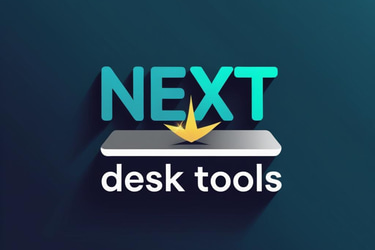Can I use ChatGPT at work? Read/write a simple team policy
Learn how to safely use ChatGPT and Copilot at work. Get a simple AI team policy, avoid risks, and boost productivity with clear guardrails.
10/2/20254 min read


I still remember the first time I thought about using ChatGPT at work. I had the tab open, typed half an email… then froze.
Was this allowed? Would I get in trouble? Was I cheating?
If you’ve ever had the same hesitation, you’re not behind—you’re actually ahead. Asking the right questions before diving in is what responsible professionals do.
Let’s clear up the confusion and give you (and your team) a simple, sensible policy you can actually use.
The real question isn’t “Can I?”—it’s “Should I, and how?”
Here’s the messy truth: most workplaces don’t have a clear AI policy. Some have banned it outright. Others quietly ignore it. And many of us are stuck in the gray zone—wondering what’s safe and what’s not.
That uncertainty is why so many people hesitate. On one hand, you don’t want to be the person who accidentally pastes confidential client data into a chatbot. On the other, you don’t want to waste three hours formatting a report that AI could polish in ten minutes.
The good news? You don’t need a 47-page corporate manual. You need guardrails, not gates. Clarity, not fear.
What are people actually worried about?
Let’s name the big ones:
“Will I get in trouble?”
Maybe. If your company has explicitly banned AI tools, yes. If they haven’t said anything, you’re in gray territory. The best answer is to ask—or propose a policy.
“Is this cheating?”
No. Using AI is like using spell-check, Google, or a calculator. The work is still yours—your judgment, your expertise, your decisions. AI doesn’t replace you; it helps you.
“Is it safe?”
Depends on the tool. Free ChatGPT remembers conversations unless you turn that off. That means company secrets, client names, financial data—none of that should go into a free AI tool.
“Will it replace me?”
Not if you use it right. People who learn to work with AI will outperform people who ignore it. AI can’t read the room, understand your company culture, or make final decisions. That’s still you.
Are Enterprise AI Tools Safer?
If your company offers an enterprise version of an AI tool—like Microsoft Copilot, ChatGPT Enterprise, or Google’s Gemini for Workspace—you’re in a much safer zone than with free public tools.
Here’s why they’re more trustworthy:
Your data isn’t training the public model. Enterprise AI doesn’t feed your company’s content back into the system.
Enterprise-grade security. Encryption, SOC 2, GDPR, HIPAA compliance, and admin controls protect your organization.
IT oversight. Admins can set permissions, monitor usage, and ensure guardrails are in place.
Workflow integration. Copilot works directly inside Outlook, Teams, and Word—no need to paste confidential data into an external chatbot.
👉 In short: free tools are fine for generic, low-risk tasks. Enterprise tools are designed for real work, with guardrails that protect you and your company.
A quick personal reassurance
When my team first got access to Microsoft Copilot, the biggest relief was knowing our emails and documents weren’t being sent off to train a public AI model. Suddenly, I felt confident using AI for meeting notes, draft reports, and idea generation—without that nagging fear of oversharing sensitive details.
📌 Not sure if your company has Copilot or another enterprise AI tool? Ask your IT team. If not, stick to safe, non-sensitive tasks in free tools—and share the simple policy template below to spark the conversation.
The 5-minute team policy (copy, paste, customize)
Whether you’re a manager writing this for your team or an employee suggesting it to your boss, here’s a simple template you can adapt. Print it, share it, and suddenly everyone knows where they stand.
(Insert your existing AI Tools Policy template here—kept as-is for clarity)
How to use this policy (and actually follow it)
Policies only work if people know why they exist. Here’s the short version:
Confidential = Don’t share it. If you wouldn’t post it publicly, don’t put it in ChatGPT.
AI = first draft, not final draft. Think of it like a very fast but overly confident intern.
Your judgment matters most. AI can generate options, but you know the context, culture, and timing that makes sense.
What if my company has no policy at all?
Then you have three smart moves:
Ask directly. “Are we allowed to use AI for drafting emails or summarizing documents?”
Propose a simple policy. Forward this article or the template above. Frame it as a productivity boost and a safeguard.
Use it cautiously until told otherwise. Stick to generic tasks, avoid confidential data, and fact-check everything.
Real examples: What’s okay and what’s not
✅ OKAY:
“Draft a polite follow-up email after today’s client call” (no names, no private details).
“Summarize this public industry article into bullet points.”
“Create a template for weekly project updates.”
❌ NOT OKAY:
Copy-pasting your company’s unreleased Q4 financial forecast.
Asking AI to rewrite a client’s contract.
Uploading your colleague’s draft performance review.
🤔 ASK FIRST:
Analyzing customer feedback (even anonymized).
Generating large portions of reports you’ll sign your name to.
Pasting internal documents wholesale.
The bottom line: AI is a tool, not a secret
You wouldn’t feel guilty about using Excel, Google, or Grammarly. AI sits in the same category—if you use it wisely.
The difference between “cheating” and “working smart” comes down to three things: transparency, safety, and judgment.
If you’re protecting confidential data, reviewing the output, and applying your own expertise, you’re not breaking rules—you’re building smarter ones.
👉 Ready to bring this to your team? Copy the policy above and customize it. Or, take the next step—grab my ebook AI Basics for Everyday Work. It’s packed with 100+ everyday prompts to save you hours each week.
(Note: Written with a little AI help—and plenty of human judgment.)
